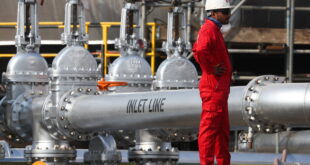The government has decided to offer the contract to build the first-ever Liquid Natural Gas (LNG) power plant to China after India abandoned the construction of a 500 MWs LNG power plant on a decision of the Sri Lanka government.
The power plant will set up at Hambantota.
Power and Renewable Energy Minister Ranjith Siyambalapitiya yesterday inspected the site at Hambantota and said construction work would start in October.
“The LNG power plant at Hambantota will be a joint venture among the governments of China and Sri Lanka and the Ceylon Electricity Board (CEB). A Memorandum of Agreement (MOA) has been signed by the three stakeholders.“ he said.
The plant is expected to cost some US$400 million or Rs. 64 billion though the exact cost would only be determined after the feasibility study was completed.
India abandoned the Sampur LNG power plant in early 2017 after the Sri Lankan government decided not to go ahead with the two proposed Indian and Japanese-funded LNG power plants with a 500 MWs capacity each.
An agreement to set up a 500 MW coal power plant with Indian investment was signed in August 2011 and the construction agreement was finalized in October. 2013 as a joint venture between the Ceylon Electricity Board (CEB) and India`s Natural Thermal Power Corporation Ltd. (NTPC).
The agreement was later scrapped because of protests by the people in Trincomalee. the Tamil National Alliance (TNA) and the anti-coal lobby. Sri Lanka then requested India to convert the coal power plant into an LNG powered power plant to which India agreed but warned of pitfalls in switching over from coal to LNG.
However. there was a heavy pressure from the CEB engineers union against the construction of an LNG power plant in Sampur.
The minister said the CEB however would give priority to set up environment-friendly green energy-powered power plants using solar and wind power.
He said 20 investors had been selected to set up 60 small-scale solar power plants of one MWs and the CEB would purchase power from them at Rs.12.73 a unit thus reducing the average price of a unit.
 Iran Energy News Oil, Gas, Petrochemical and Energy Field Specialized Channel
Iran Energy News Oil, Gas, Petrochemical and Energy Field Specialized Channel




